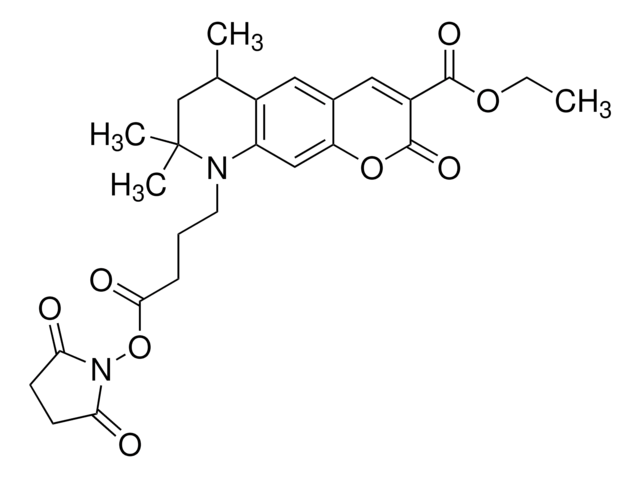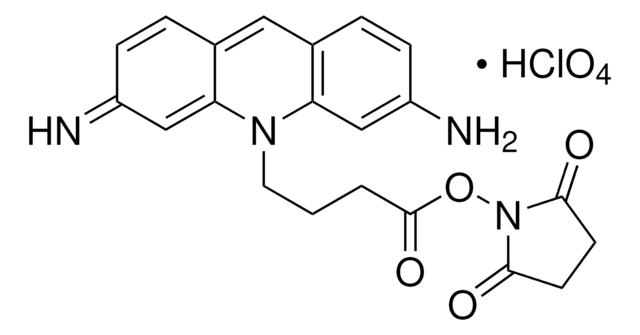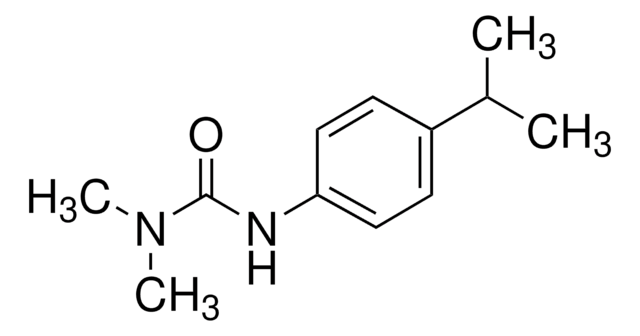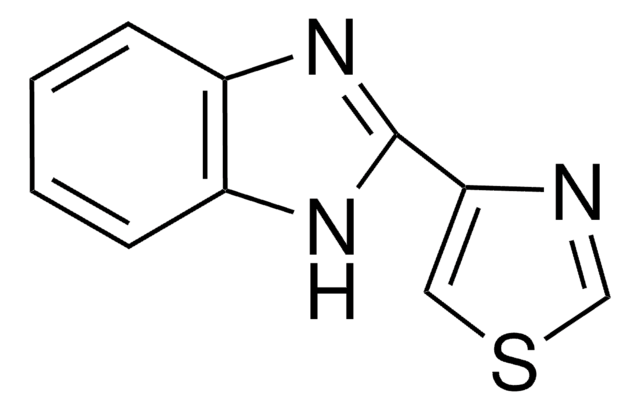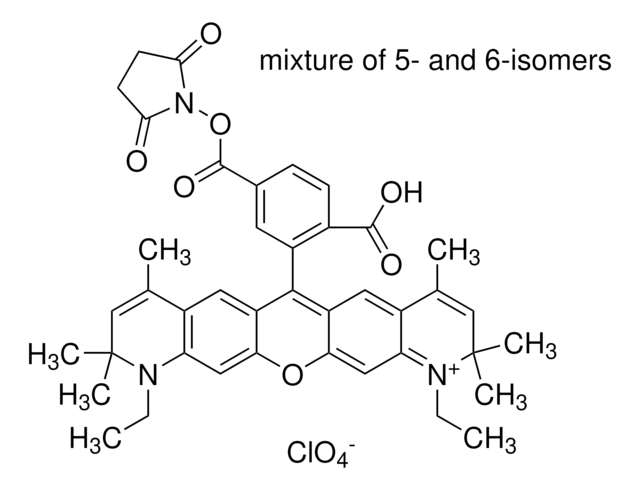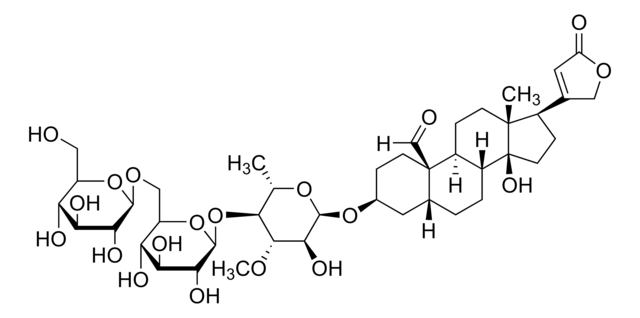Key Documents
56759
Atto 425
BioReagent, suitable for fluorescence
About This Item
Polecane produkty
linia produktu
BioReagent
Próba
≥90% (HPLC)
Postać
(Report result)
producent / nazwa handlowa
ATTO-TEC GmbH
przepuszczalność
254 nm, >90%
425 nm, >90%
fluorescencja
λex 440 nm; λem 484 nm
λ
in PBS, pH 7.4
in ethanol (with 0.1% trifluoroacetic acid)
absorpcja UV
λ: 423-429 nm Amax
przydatność
suitable for fluorescence
Warunki transportu
wet ice
temp. przechowywania
−20°C
ciąg SMILES
CCOC(=O)C1=Cc2cc3C(C)CC(C)(C)N(CCCC(O)=O)c3cc2OC1=O
InChI
1S/C22H27NO6/c1-5-28-20(26)16-10-14-9-15-13(2)12-22(3,4)23(8-6-7-19(24)25)17(15)11-18(14)29-21(16)27/h9-11,13H,5-8,12H2,1-4H3,(H,24,25)
Klucz InChI
WNDDWSAHNYBXKY-UHFFFAOYSA-N
Zastosowanie
Informacje prawne
Kod klasy składowania
11 - Combustible Solids
Temperatura zapłonu (°F)
Not applicable
Temperatura zapłonu (°C)
Not applicable
Certyfikaty analizy (CoA)
Poszukaj Certyfikaty analizy (CoA), wpisując numer partii/serii produktów. Numery serii i partii można znaleźć na etykiecie produktu po słowach „seria” lub „partia”.
Masz już ten produkt?
Dokumenty związane z niedawno zakupionymi produktami zostały zamieszczone w Bibliotece dokumentów.
Klienci oglądali również te produkty
Nasz zespół naukowców ma doświadczenie we wszystkich obszarach badań, w tym w naukach przyrodniczych, materiałoznawstwie, syntezie chemicznej, chromatografii, analityce i wielu innych dziedzinach.
Skontaktuj się z zespołem ds. pomocy technicznej